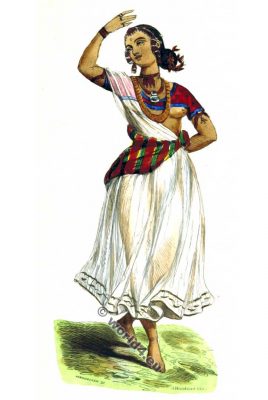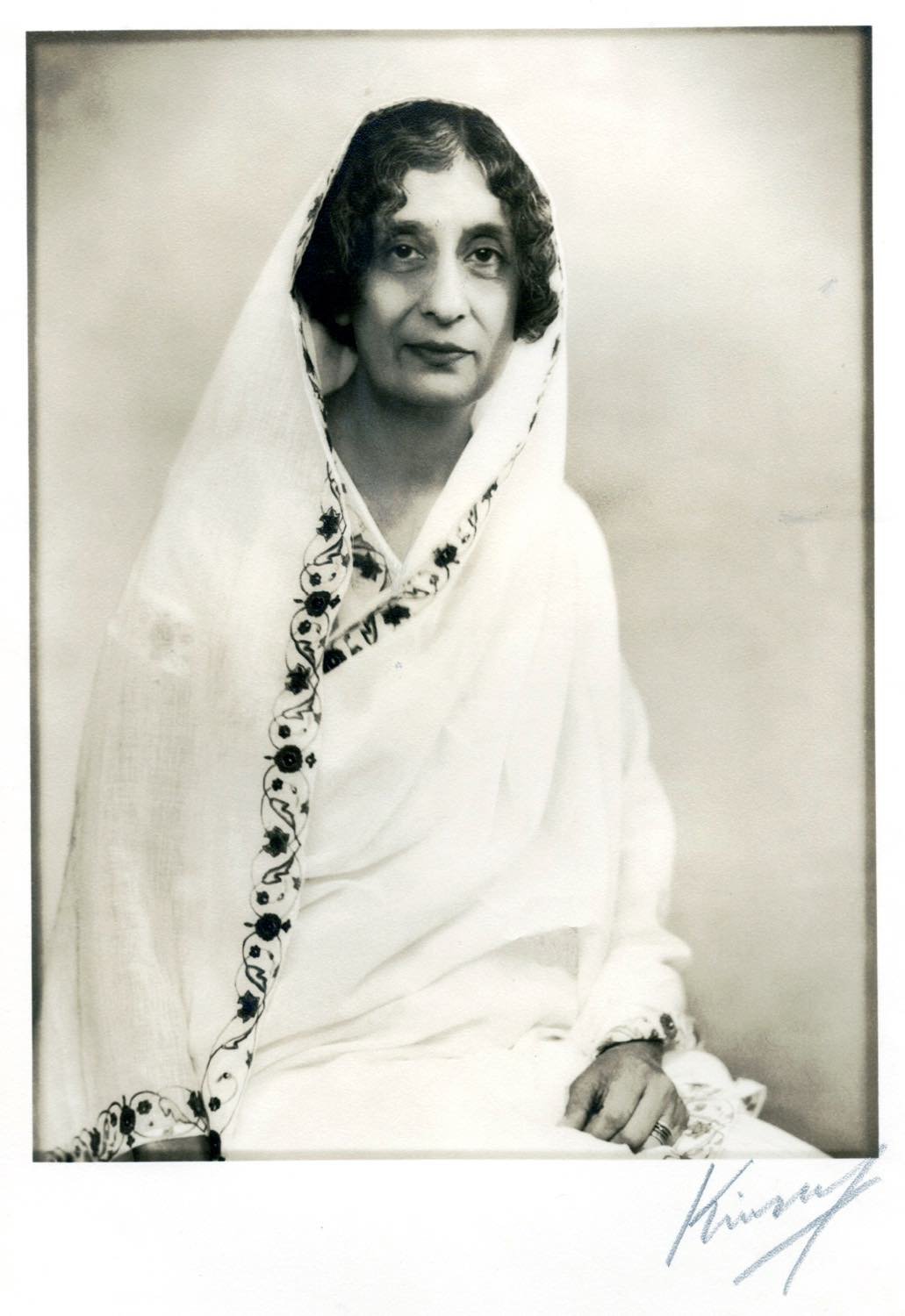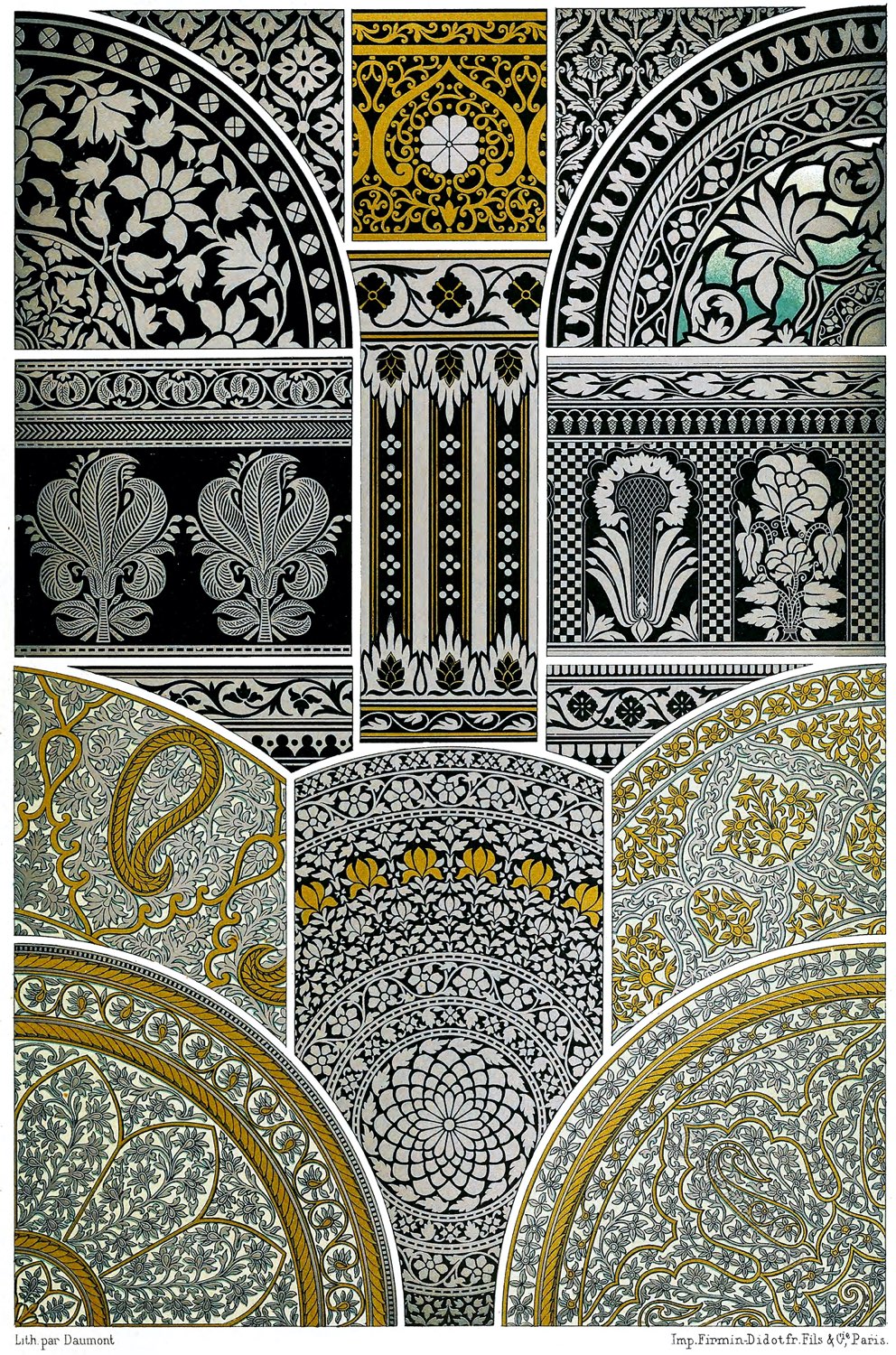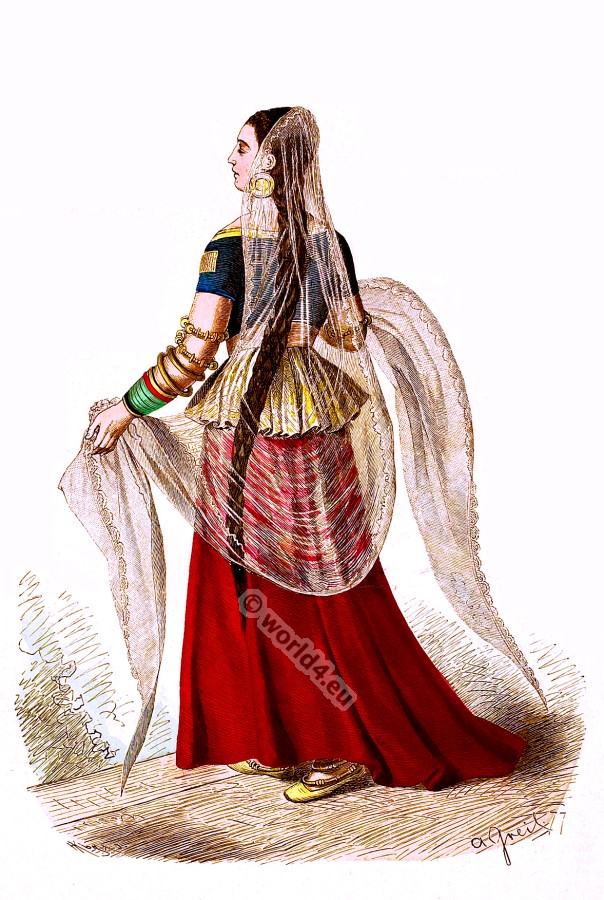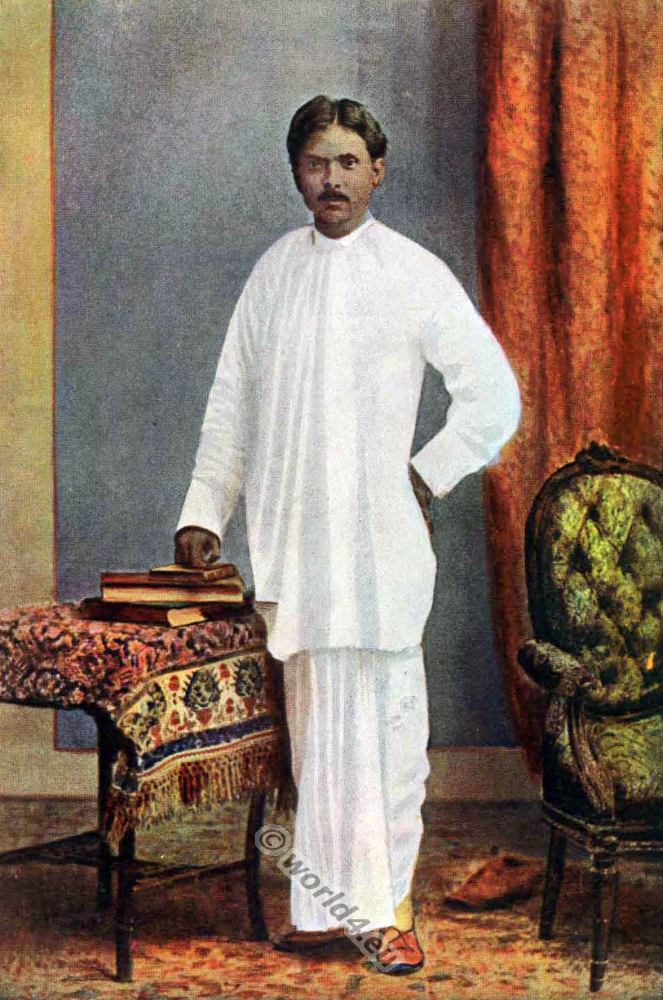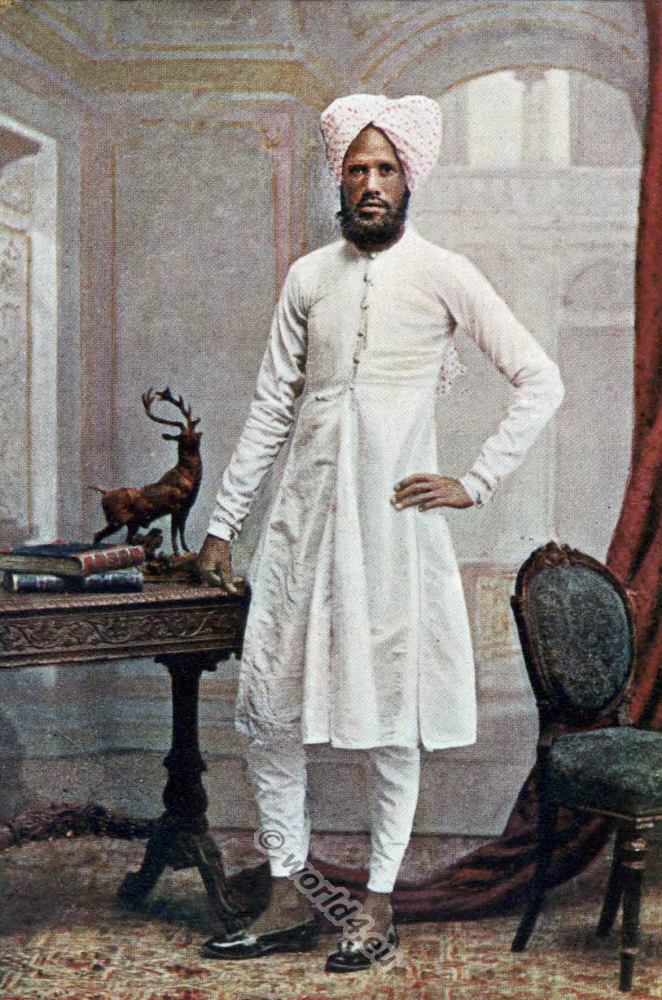Bayadere. Indian dancer.
Bayaderes (from Portuguese bailadeira) were Indian dancers, as Devadasi (God Servants) church services or as dancers, even at secular events occurred. Their shawls were also called Bayadere. As ‘easy girls’ are Bayaderes a favorite theme of Rococo painting of the 18th and 19th centuries.
A female singer which occurs in Paris at the beginning of the 20th century as a Bayadere, is name giver of the operetta The Bayadere by Emmerich Kálmán.
Source: “Die Völker des Erdballs nach ihrer Abstammung und Verwandtschaft, und ihren Eigenthümlichkeiten in Regierungsform, Religion, Sitte und Tracht. Mit kolorierten Abbildungen”. Berghaus, Heinrich Carl Wilhelm. (The peoples of the globe according to their lineage and kinship, and their peculiarities in form of government, religion, custom and costume. With colored pictures by H. C. W. Berghaus. Prindet by Muquardt, Belgium 1847)
Related to:
- Traditional Parsis in India. History of the Parsee.
- Typical pictures of Indian Natives.
- The Indian Mughal Empire.
- The Persians in India.
- Plant drawings from an Indian Cotton Printer`s Pattern Book, 1910.
- Historical Asia costumes by Auguste Wahlen.
- Costumes of all countries by Alexandre Lacauchie 1850s.
- Historical and folk costumes by Franz Lipperheide.
- The costume of Turkey. Ottoman Empire 18th century.
- Costumes and scenery of Afghanistan.
- Views of Darjeeling: With typical native portraits and groups.
- Traditional French national costumes.
- Tyrolean national costumes 1835.
- Souvenir de L’Exposition Universelle de Vienne.
- Costumes of Japan and Java.
- Our islands and their people. Hawaii, Philippines, Puerto Rico, Cuba.
- Traditional Dutch national costumes.
- The Switzerland national costumes of 17th ‚18th, 19th century originals.
- Folk dresses from Norway, Dutch, Germany and Hungaria.
- Mexico by Carl Nebel 1836.
- Provincial Russia. Costume and Culture.
- Costume of the Russian empire by Edward Harding.
- Serbian national costumes by Vladimir Kirin.
- Historical European costumes by Auguste Wahlen.
- The Highlanders of Scotland, 1870.
- Africa, the landscape and the people 1931.
- Historical costumes from Africa, America and Oceania.
- Traditional folk costumes of Italy and France in 1821.
- The Serbs in the Adriatic. Their types and costumes 1870-1878.
[sitecreator show=”14″]

